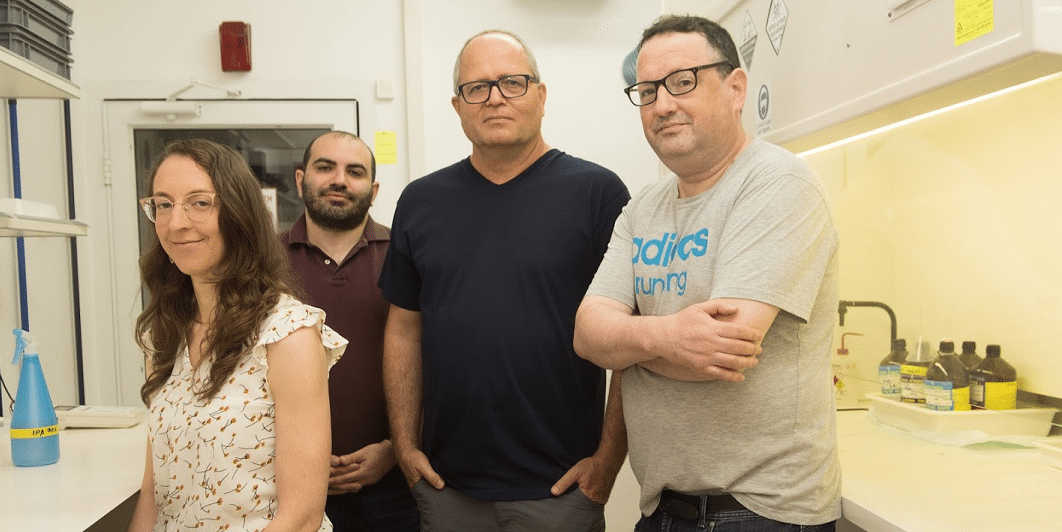by ILH Staff
Solar energy can be stored by converting it into hydrogen using hematite.
 |
| (L-R) Yifat Piekner, Dr. Daniel Grave, Prof. Avner Rothschild, Dr. David Ellis | Photo: Courtesy |
Solar energy plays an enormous role in our lives. If we can harness it, we can eliminate the need for polluting fossil fuels like petroleum and gas. But the main challenge in switching to solar energy lies in the varying availability of sunlight as the day progresses and seasons change.
Since the electrical grid needs stable power at all hours of the day and night, use of solar energy depends on our ability to store it. But the current technology for storing solar energy, batteries, is inapplicable to solar energy storage in the amounts need to supply a manufacturing site, a neighborhood, or an entire city.
Researchers from the Technion-Israel Institute of Technology have made a scientific breakthrough on the storage of solar energy, as reported by Energy & Environmental Science. A project led by Professor Avner Rothschild of the Technion's Faculty of Materials Science doctoral student Yifat Piekner from the Nancy and Stephen Grand Technion Energy Program (GTEP has shown that hematite can serve as a promising material in converting solar energy into hydrogen.
The process entails the use of photoelectrochemical solar cells, which are similar to photovoltaic cells, but instead of producing electricity, they produce hydrogen using the electric power (current × voltage) generated in them. The power then uses sunlight energy to dissociate water molecules into hydrogen and oxygen.
Hydrogen is easy to store and when used as fuel, does not involve greenhouse gas or carbon emissions.
One of the main challenges of photoelectrochemical cells is the development of efficient and stable photoelectrodes in a base or acid electrolyte, which is the chemical environment in which water can be efficiently split into hydrogen and oxygen. This is where hematite-based photoelectrochemical cells come into play. Hematite is an iron oxide that has a similar chemical composition to rust. Hematite is inexpensive, stable and nontoxic, and has properties that are suitable for water splitting.
However, hematite also has its disadvantages. For reasons that are still unclear, the photon-to-hydrogen conversion efficiency in hematite-based devices is not even half of the theoretical limit for this material. The new Technion research builds on findings recently published in Nature Materials and proposes an explanation. It transpires that the photons absorbed by hematite produce localized electronic transitions that are "chained" to a specific atomic location in the hematite crystal, rendering them incapable of generating the electric current used for water splitting.
But a new analysis method developed by Piekner and her research colleagues, Dr. David Ellis of the Technion and Dr. Daniel Grave of Ben-Gurion University of the Negev, the following data were measured for the first time: Quantum efficiency in the generation of mobile (productive) and localized (nonproductive) electronic transitions in a material as a result of photon absorption at different wavelengths, and electron-hole separation efficiency.
This is the first time that these two properties (the first, optical in nature and the second, electrical) have been measured separately, allowing for deeper understanding of the factors that influence the energy efficiency of materials for converting solar energy into hydrogen or electricity.
The research study was sponsored by the Israel Science Foundation's research center for photocatalysts and photoelectrodes for hydrogen production in the Petroleum Alternatives for Transportation Program, the Grand Technion Energy Program (GTEP) and the Russell Berrie Nanotechnology Institute (RBNI) at the Technion.
ILH Staff
Source: https://www.israelhayom.com/2021/08/24/technion-researchers-crack-battery-free-solar-energy-storage/
No comments:
Post a Comment